The beauty of the Appalachian spring is an annual treat with few equals. In the deciduous forest, most of the small and fragile herbs on the forest floor burst into bloom in a narrow window of time. They wait for spring, but they must complete much of their growth and reproduction before the sky above is closed off by the dense leaves of canopy trees. In the Laurel Highlands, late April to mid-May approximates the window, meaning a walk in the woods at that time is most rewarding. The photos published here were all taken on a short hike on April 14, 2023 at Ohiopyle State Park, or nearby. What a nice day! Some of these species are available in navigable 3D models at https://virtualgarden.powdermill.org/
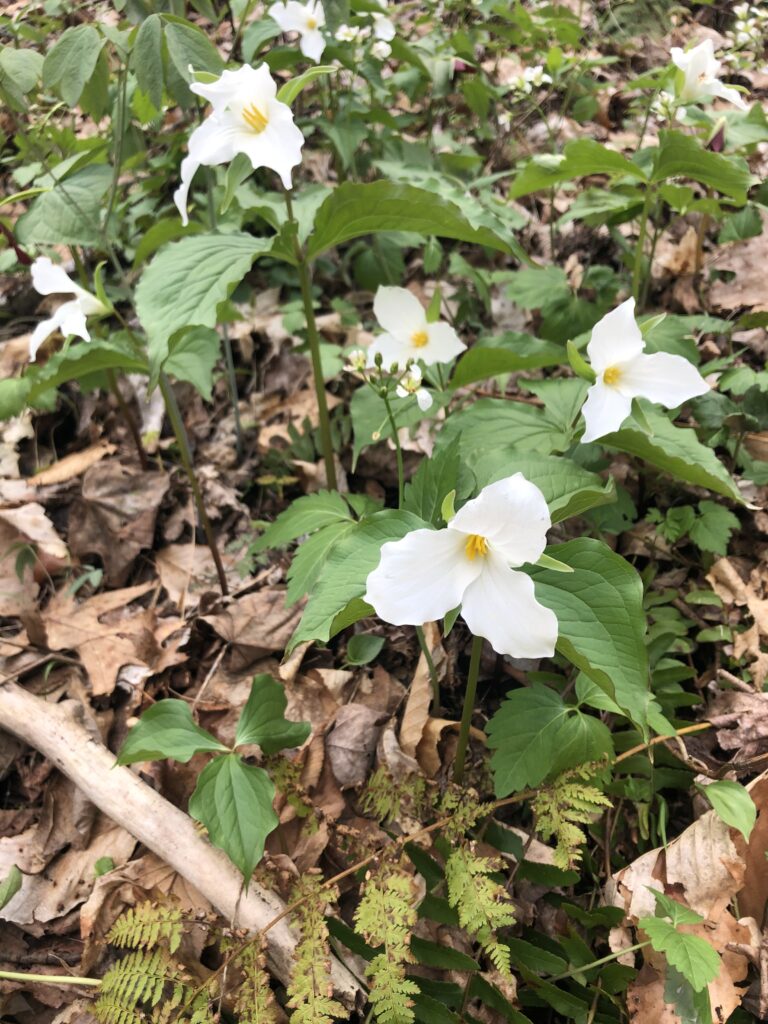
Closeup of Trillium grandiflorum. The most profuse of the delicate wildflowers in our area, the blanket of blooms of this species were far more common before excessive deer browsing that started about 50 years ago. 3D model available here. Click on the image and hold the button down, moving the mouse to move the model. Pressing <control> at the same time allows you to zoom.
Not all forest patches are the same. A good place for wildflowers is generally on neutral soils (neither acid nor base) and a place with little deer browsing. Both of these criteria are hard to find in our area because so much of our landscape is naturally acidic soils, heavily browsed by deer. But steep slopes offer good opportunity because deer don’t like climbing steep hills any more than we do, and the erosion of the limestone from the ridge above will help neutralize the acid soils on the hill below.

Violets. We have many species, and deer largely do not eat them. Species of blue, yellow, and cream can all be found in our area.
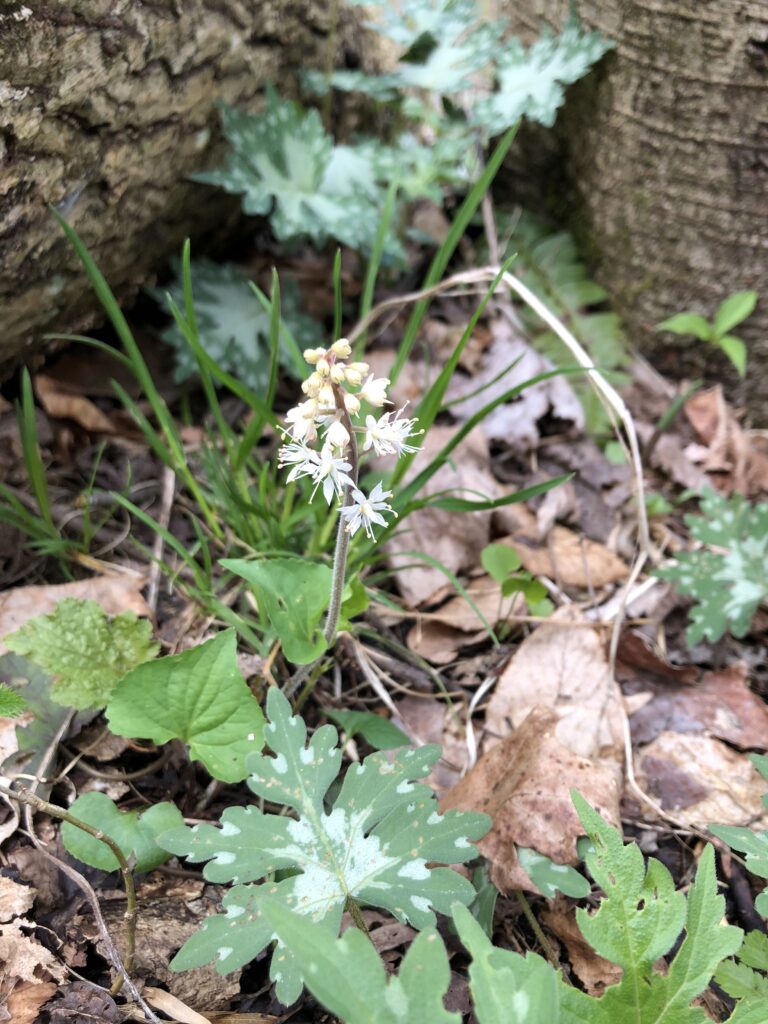
Foam flower, Tiarella cordifolia. Likes moist soils, neither wet nor dry. Foliage makes a good ground cover if a gardener chooses to manage it. Check out the 3D model here. Click on the image and hold the button down, moving the mouse to move the model. Pressing <control> at the same time allows you to zoom.
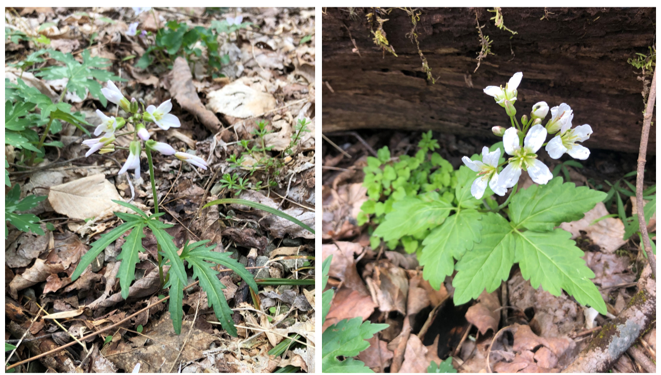
Tooth wort, Cardamine species. “Wort” means “leaf” in German, and apparently some people thought the leaves of this wildflower looked like a tooth. This is in the mustard family with the rockets and invasive garlic mustard that are better known. With more than 150 species worldwide in the genus, there are several species in our area, and here you see two. The one with the very narrow leaves (left) is called the “cut leaf tooth wort,” probably because no one thought the leaves looked like teeth. [Cardamine concatenata]
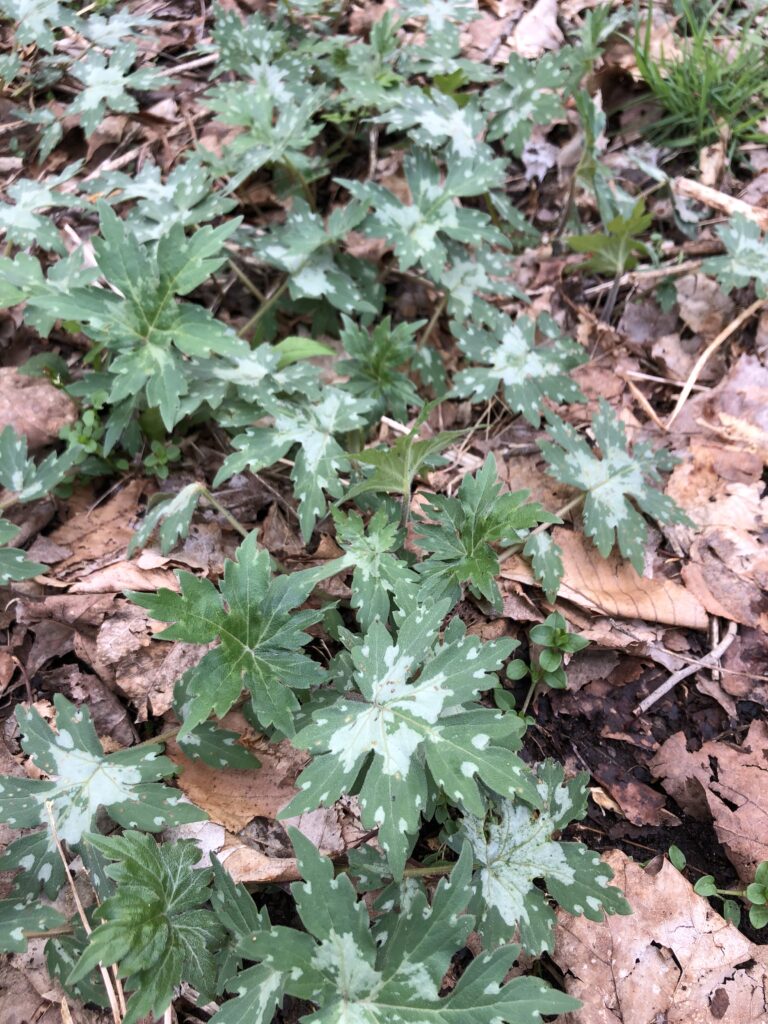
Water leaf, Hydrophyllum virginianum. Witnessed too early for the flowers to be up, the beautiful foliage is a treat by itself. The genus name means “water leaf” because it looks like it was splashed with water. This genus was described by Linnaeus, father of scientific taxonomy, in 1753. This plant can be found from eastern Canada to the eastern part of the Dakotas, and south to Missouri and North Carolina.
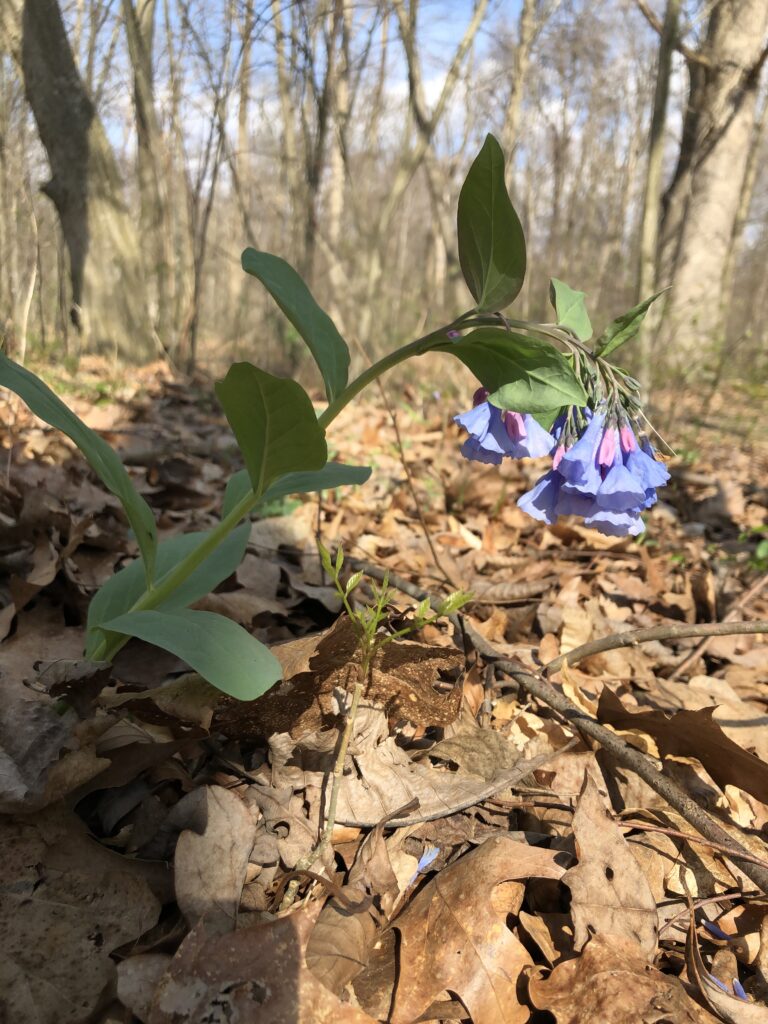
The Virginia bluebell (Mertensia virginica) is a favorite anywhere it blooms, and they can form large colonies that are striking. They like moist sites, and can be found from Quebec to Alabama and west to Kansas and Minnesota. Blue is an uncommon color in terrestrial systems, and makes this wildflower all the more striking in the woods. See the 3D model here.
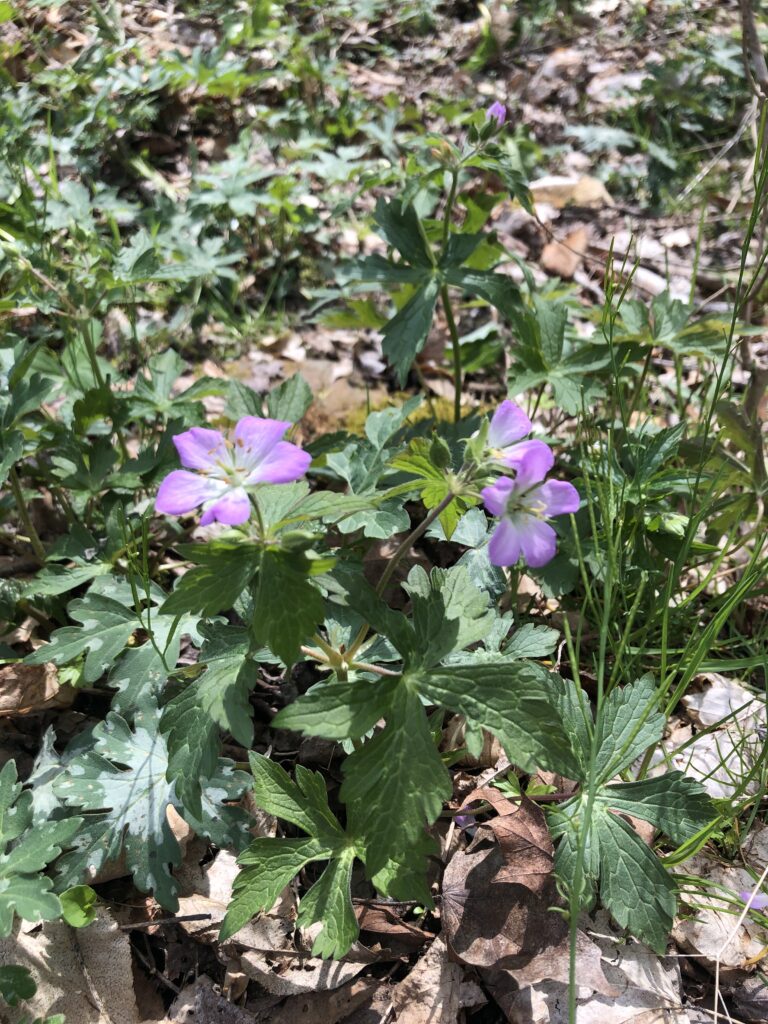
Geranium maculatum. Everyone knows the beautiful, deep red geraniums that we buy in the store, but for my money the native species is every bit as beautiful. 3D model.
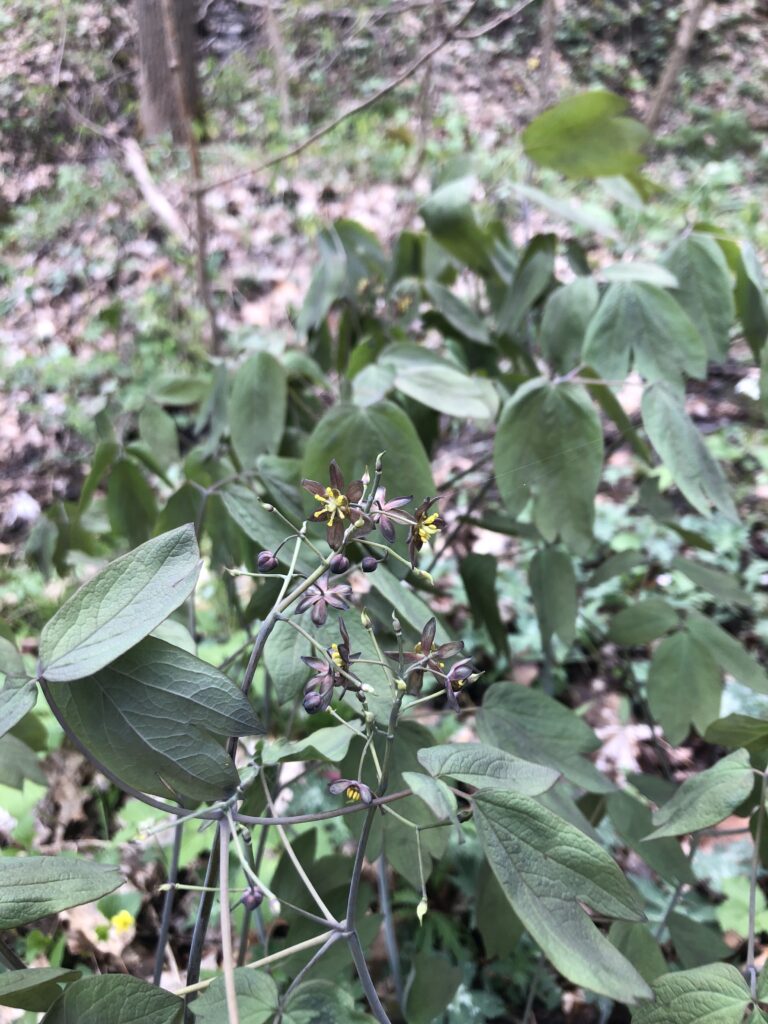
Blue Cohosh, Caulophyllum thalictroides. Fertile soils with lots of organic matter, and dappled shade. These can be long-lived plants, forming large colonies. This is one of the only plants with a flower that is nearly black, stamens are yellow.
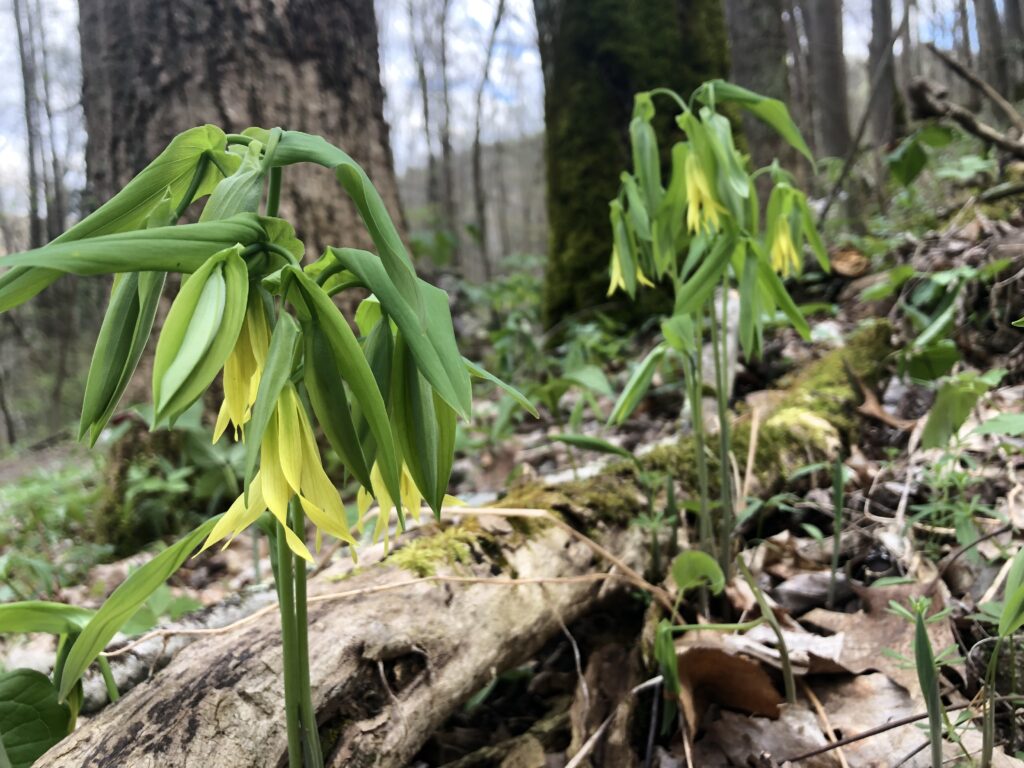
Bell flower, Uvularia grandiflora. Pendant yellow blossom, rather disorganized wilting look to it. Deer favor this flower and they will not be found where deer are common. 3D model.
Soggy spots in the forest have plants typical of poorly drained soils. The swamp buttercup is showy and large for an early spring plant.
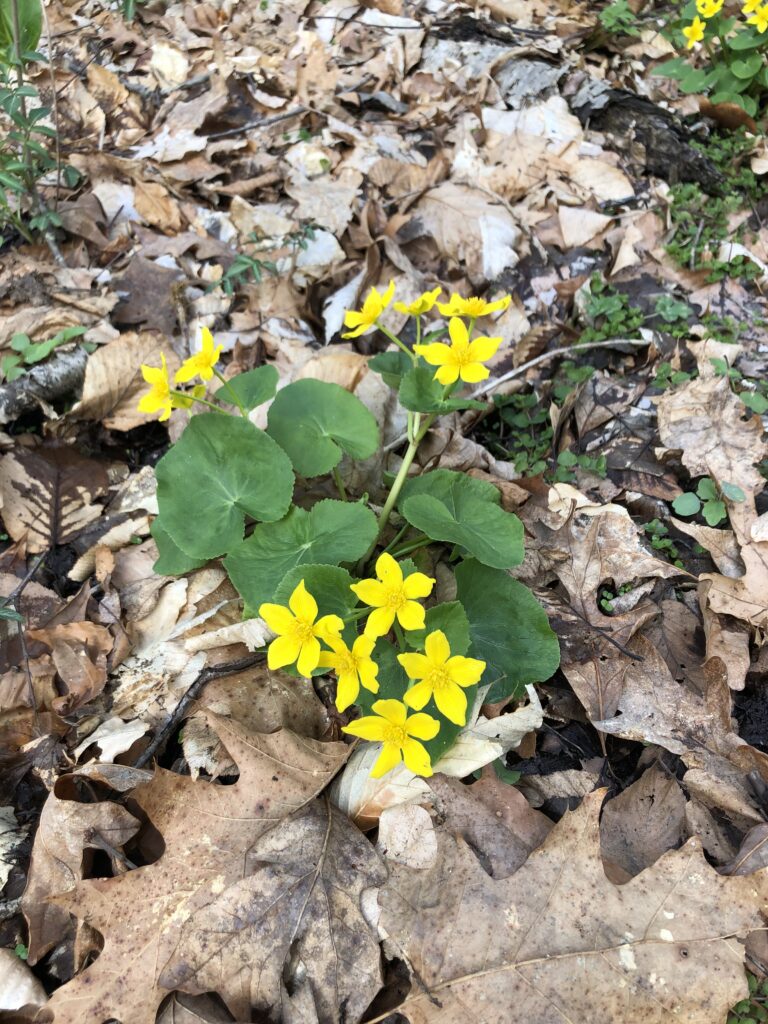
Swamp buttercup, Ranunculus septentrionalis, is one of the few spring flowers that actually prefers only partial sun to light shade.
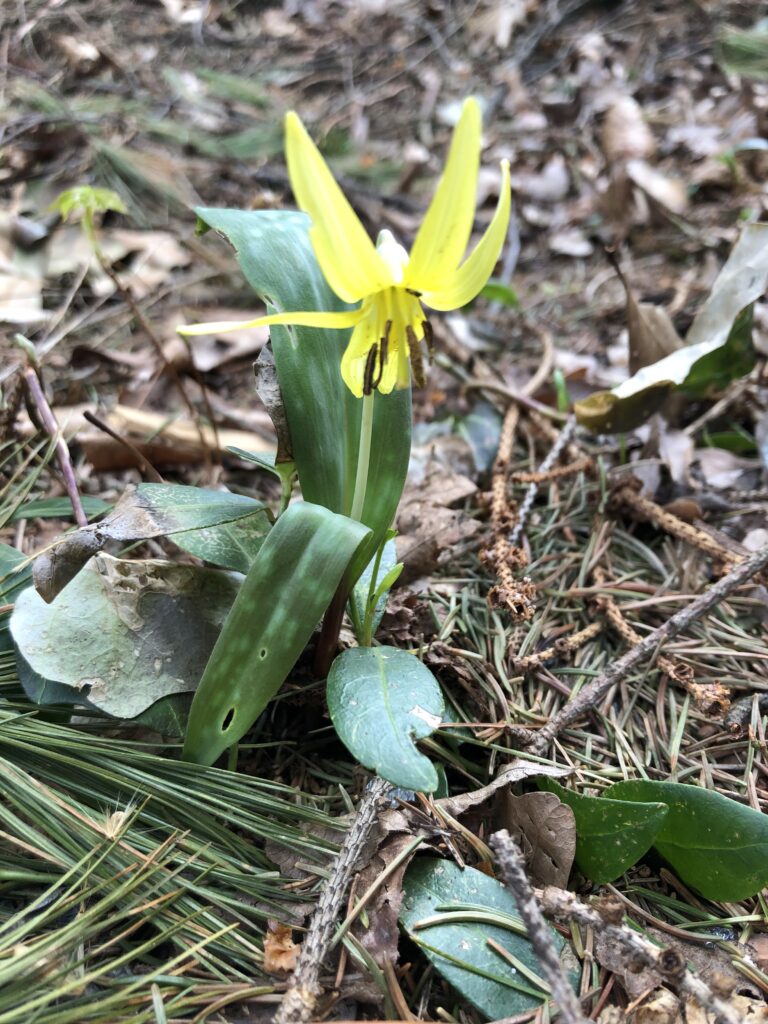
Trout lily, Erythronium americanum, is so named because the speckled leaves are reminiscent of the fish (not very obvious in this photo). They are common beside streams and in unstable areas that are moist. They have the curious habit of pushing their little bulbs deeper every year such that a flood or small landslide will not exterminate them. If they get too deep they only send up leaves and do not bloom!
Acid soils do not support the same diversity of plants, but there are several that are either tolerant of acid soils or even prefer it. I found several in this little hike. The first one, the red trillium can be found in many places, but is one of the few trilliums that grows well in acid soils.

Trillium erectum is relatively tall for a trillium and the long stem on the flower tends to point the flower sideways or downward. This flower smells bad, and deer don’t eat it, which is a good trick. It is sometimes called “stinking benjamin” due to the odor, or “wake robin” because it is a spring plant with red flower, suggesting the bird. 3D model.

Dutchman’s breeches, Dicentra cucullaria, resembles old pantaloons hanging from a laundry line. This species likes acid soil, and is a true ephemeral, only up in the spring and gone by summer.

Solomon’s seal, Polygonatum species, has a pretty, arcing habit, with small, graceful flowers suspended below. Here, you see the buds about to bloom. 3D model.
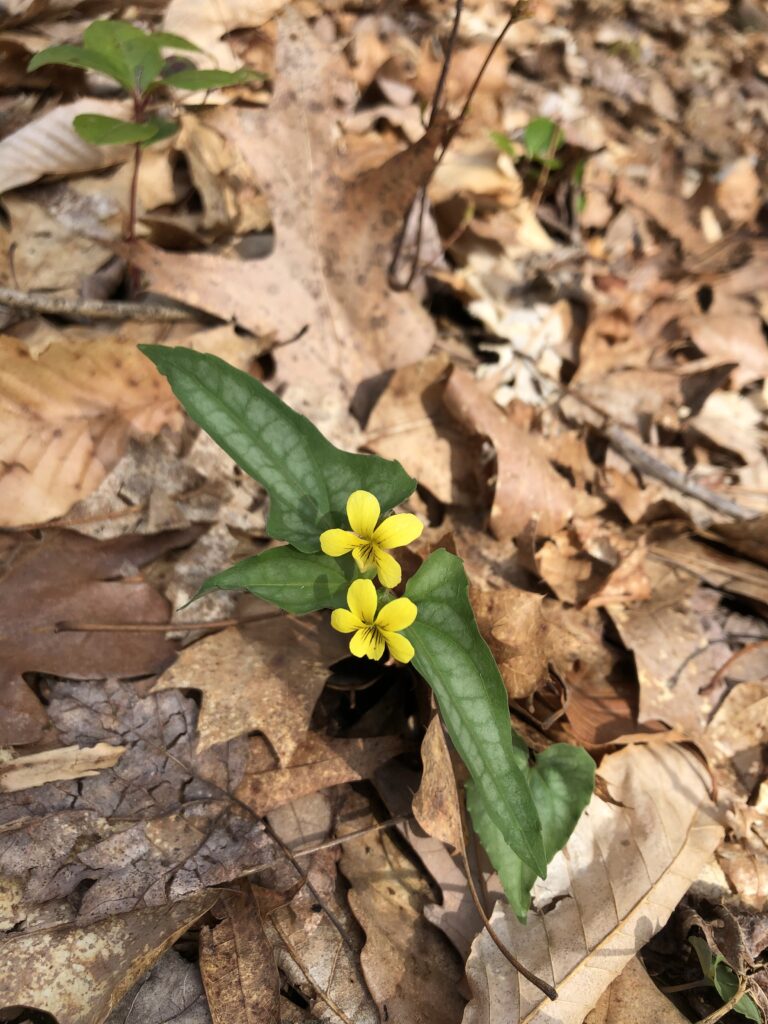
Halberd leaf violet, Viola hastata. This plant is happy on acid soils, with a leaf very distinct from other violets, long and pointed like a weapon (the halberd.) This bright yellow flower is a welcome discovery on the forest floor where little else grows.
Coda: In this habitat, about 80% of the plant diversity is in the understory. Yet, we have always managed forests for the trees that can go to a sawmill. We should start thinking about the great diversity of plants that are not part of the timber industry and that form the beginning of the food chain for insects and birds. Plus, they are beautiful.

